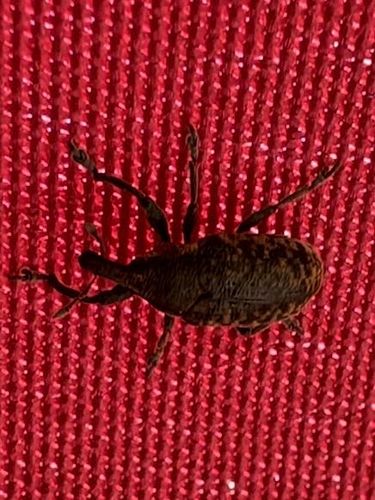Weevil
Scientific Name: Curculionidae (a family of beetles)
Order & Family: Order: Coleoptera, Family: Curculionidae
Size: Typically 1 mm to over 60 mm (0.04 to 2.4 inches), depending on the species. Most common species are several millimeters long.

Natural Habitat
Found in diverse habitats worldwide, including forests, agricultural fields, gardens, and urban areas, wherever their host plants are present.
Diet & Feeding
Primarily herbivorous, feeding on various plant parts including seeds, stems, roots, and leaves. Some species are highly specialized to a single plant host, while others are generalists.
Behavior Patterns
Many weevils are slow-moving and may play dead when disturbed. Larvae often bore into plant tissues, and adults feed on external parts of plants. Lifecycle involves complete metamorphosis: egg, larva, pupa, and adult.
Risks & Benefits
Risks: Many species are significant agricultural pests, causing economic damage to crops, stored grains, and trees (e.g., boll weevil, rice weevil, granary weevil). Benefits: Some species can be used for biological control of invasive weeds. They also play a role in decomposition and as a food source for other animals in ecosystems.
Identified on: 8/8/2025